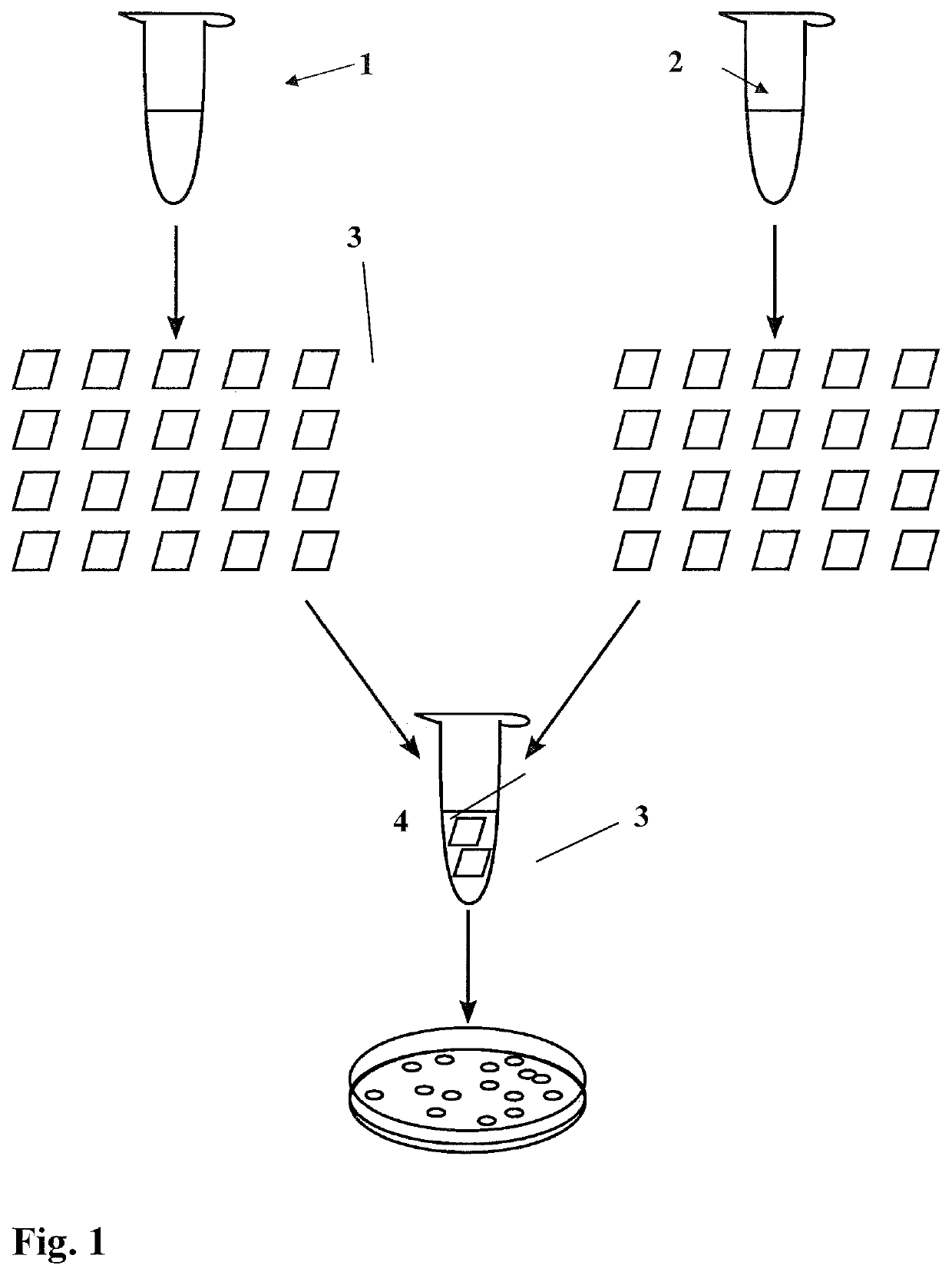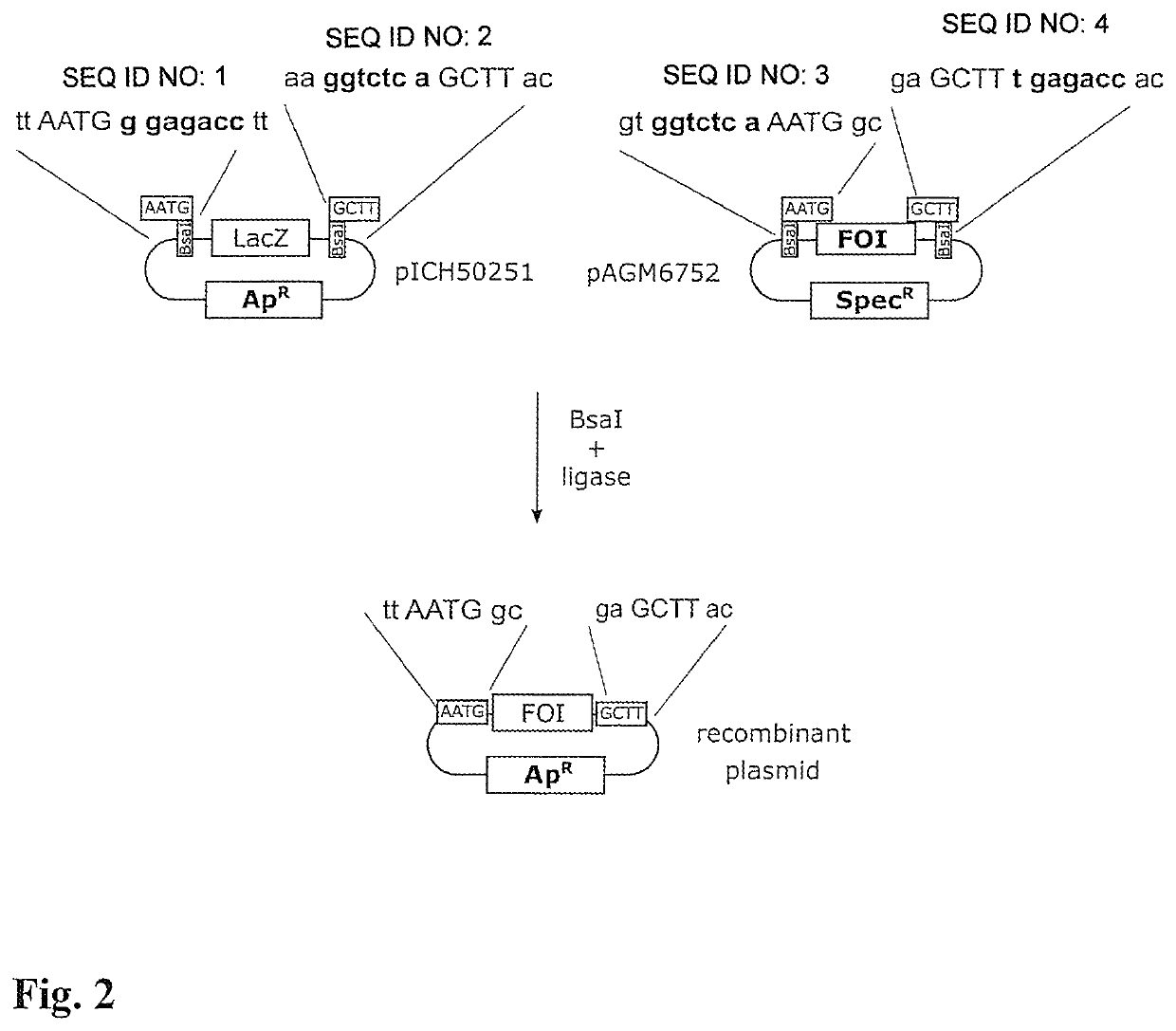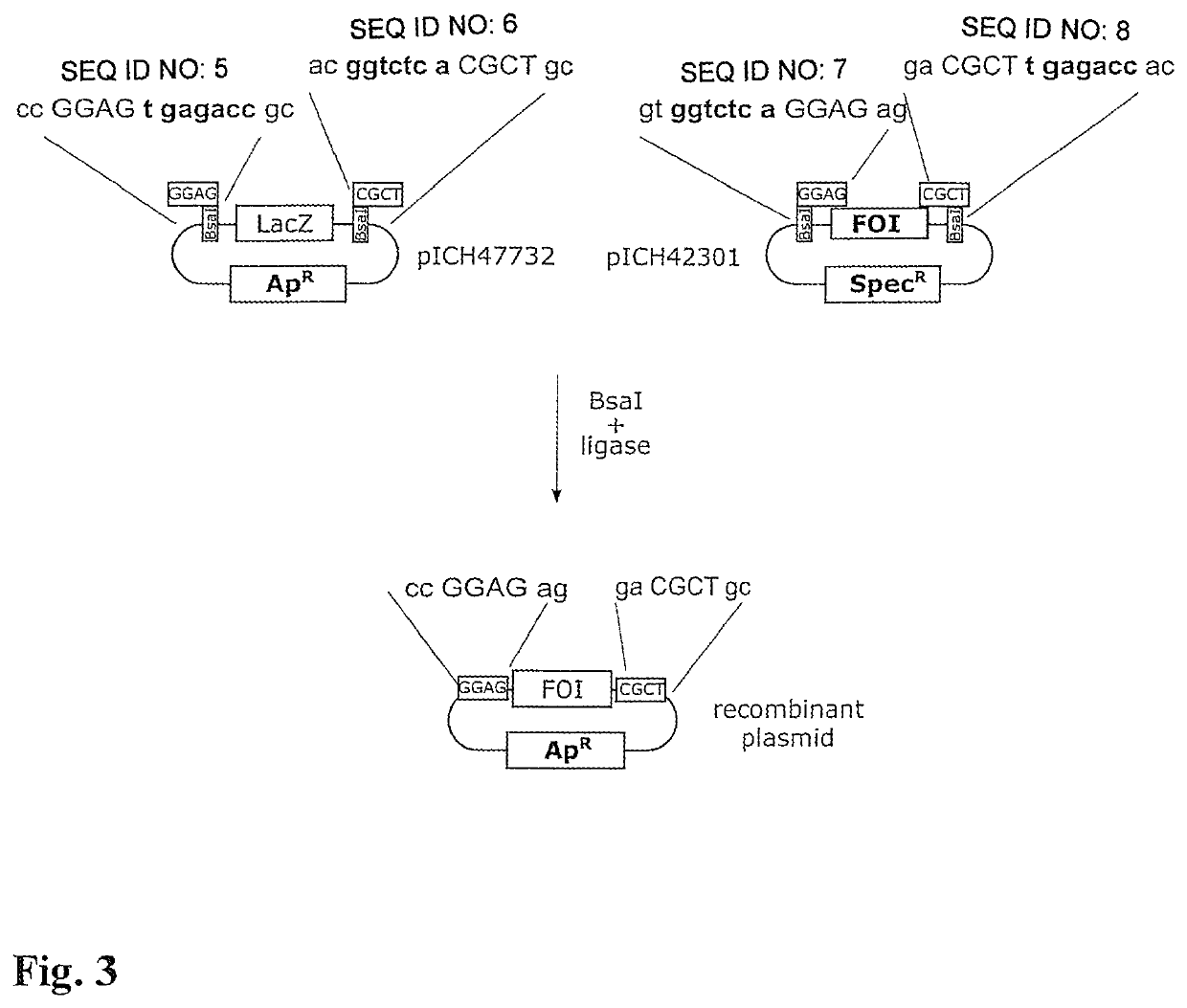Method, substrate and kit for one-pot one-step assembly of DNA molecules
a one-step assembly and dna technology, applied in the field of one-step assembly of dna molecules, can solve the problems of plasmid dna, limiting the provision of cloning strategies, and making the development of cloning strategies increasingly difficult, so as to keep the dna molecule dry
- Summary
- Abstract
- Description
- Claims
- Application Information
AI Technical Summary
Benefits of technology
Problems solved by technology
Method used
Image
Examples
example 1
[0034]40 fmol (2.4 μL) of plasmid pICH50251 (see left-hand side of FIG. 2 for the construction; depicted sequence portions in SEQ ID NO: 1, 2) were pipetted onto a small piece of filter paper 3 (square with 2 mm edge length), which had been cut out from a larger filter paper (Sartorius, class 6, 80 g / m2 FT 3-312-070). 40 fmol (1.8 μL) plasmid pAGM6752 (see FIG. 2, right-hand sides; depicted sequence portions in SEQ ID NO: 3, 4) were pipetted onto a second filter paper piece 3 of similar size and having similar properties. The two filter paper pieces 3 were then dried at room temperature and stored in the dry state for 24 h.
[0035]The two filter paper pieces 3 were placed in a 1.5 mL reaction vessel 4, and 3 μL 10× Promega ligase buffer, 1.5 μL BsaI (15 Units, NEB), 1.5 μL ligase (4.5 Units, Promega) and 24 μL water were added, to give a total reaction volume of 30 μL. The reaction vessel 4 was incubated for 1 h at 37° C., followed by 5 min at 50° C. and 5 min at 80° C.
[0036]The total...
example 2
[0038]DNA of the plasmids pICH47732 (insert; equivalent to plasmid pICH50251 in respect of the restriction positions for the “Golden Gate” assembly; construction see left-hand side of FIG. 3; depicted sequence portions in SEQ ID NO: 5, 6) and pICH42301 (vector; equivalent to the plasmid pAGM6752 in respect of the restriction positions for the “Golden Gate” assembly; see right-hand side of FIG. 3; depicted sequence portions in SEQ ID NO: 7, 8) were prepared with use of the Macherey Nagel Miniprep kit “NucleoSpin® Plasmid”. The DNA concentrations, which were measured with use of a “NanoDrop” UV-vis spectrophotometer (Thermo Fisher Scientific Inc.), were 275 ng and 172 ng per microlitre, or 89 and 82 fmol per microlitre.
[0039]DNA for both plasmids was applied separately to sterile MCC beads, i.e. beads made of microcrystalline cellulose (Cellets® 700, HARKE Pharma GmbH), which were then placed in two separate reaction vessels and were subjected in each case to four separate treatments:...
PUM
| Property | Measurement | Unit |
|---|---|---|
| temperature | aaaaa | aaaaa |
| volumes | aaaaa | aaaaa |
| volumes | aaaaa | aaaaa |
Abstract
Description
Claims
Application Information
 Login to View More
Login to View More - R&D
- Intellectual Property
- Life Sciences
- Materials
- Tech Scout
- Unparalleled Data Quality
- Higher Quality Content
- 60% Fewer Hallucinations
Browse by: Latest US Patents, China's latest patents, Technical Efficacy Thesaurus, Application Domain, Technology Topic, Popular Technical Reports.
© 2025 PatSnap. All rights reserved.Legal|Privacy policy|Modern Slavery Act Transparency Statement|Sitemap|About US| Contact US: help@patsnap.com



